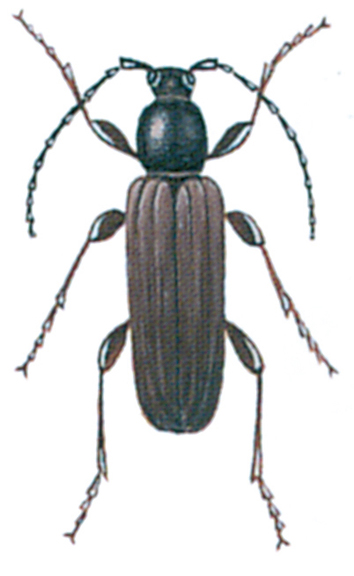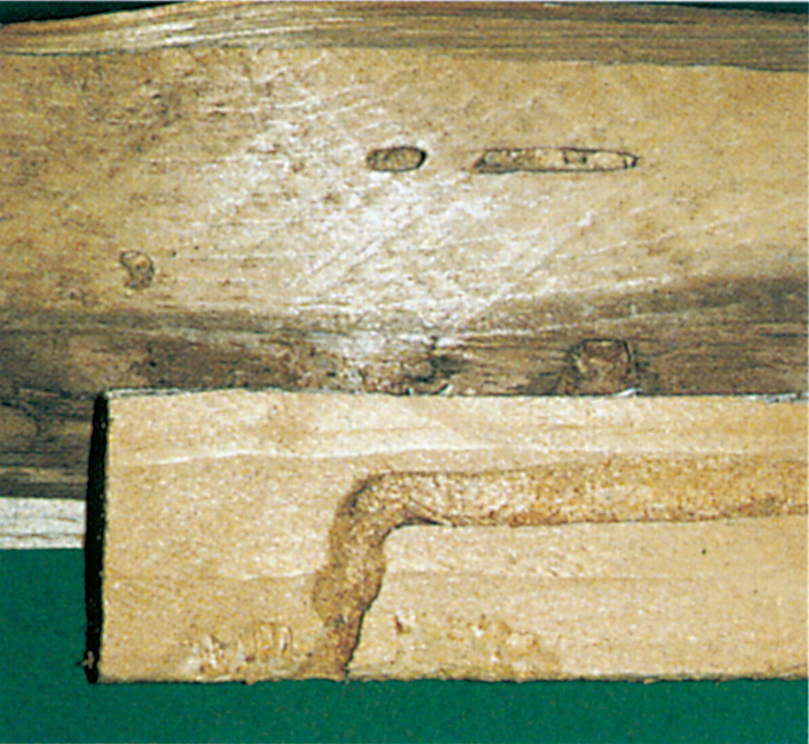Latin: Tetropium castaneum var. luridum

The females of this species visit old or diseased woodland trees and lay their eggs in crevices in the bark. They also lay in fallen trees or stumps, almost always choosing conifers, particularly spruce.
As in the case of Callidium, the larvae live in the layer between the bark and the wood, but gnaw more of the bark. The tunnels, which have a diameter of up to 1.5 cm, are full of wood dust. The larva first gnaws 2-4 cm directly into the tree and then turns and follows the grain of the wood, the tunnel having a total length of 4-6 cm.

When fully grown the larva makes a slightly enlarged chamber, which it closes behind it with coarse wood fibres, and then pupates. When the adult beetle emerges it finds its way back along the tunnel, gnawing an exit-hole if there is still bark on the tree, and flies off. The total development normally takes a year.
The larva can complete its development even if the tree is felled and used as timber, but as the female beetle will only lay eggs in the bark and not in dry wood the infestation cannot spread indoors, and will soon die out.




